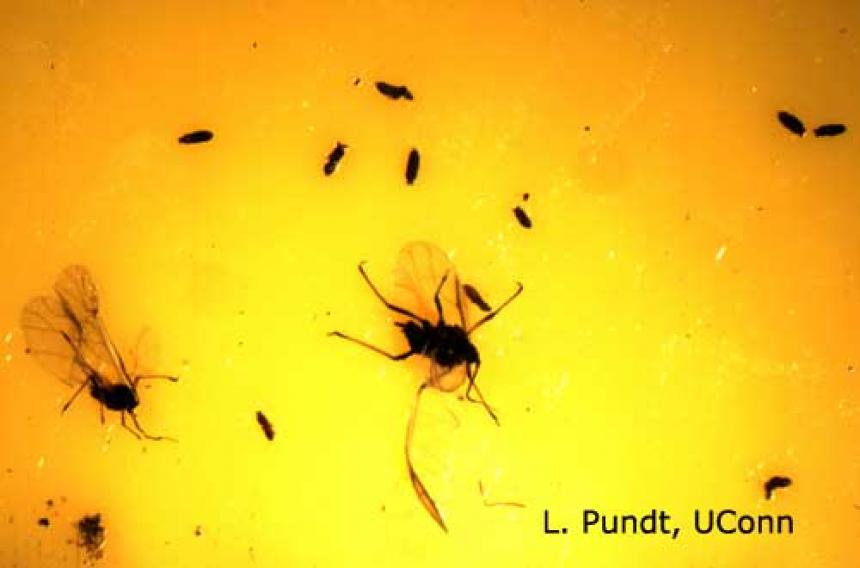Springtails are very small (~1/16 inch in length) primitive insects without wings. Their color varies from white, gray, black, brown or purple. Many, but not all, species, have a specialized fork like structure “furcula” with which they jump or hop like fleas. Springtails are very common and abundant insects that are often overlooked because of their small size. They prefer areas with high organic matter. Springtails primarily feed upon fungi, algae and decaying matter in the growing media. If abundant, growers may notice the springtails hopping on the growing media surface after watering. Springtails may also be caught on yellow sticky cards as in this photo. When growers are holding plants horizontally and then tapping the plants over a white sheet of paper, springtails may drop from the growing media can be seen on the paper. Then, they are sometimes confused with thrips larvae.
Occasionally, high populations of garden springtails feed on leaves of tender young seedlings producing tiny pits on the leaf surface. Feeding resembles that of flea beetles.
Springtails may be spread in unpasteurized potting soil, via plant contact or may simply move indoors into the greenhouse from nearby habitats.
Sanitation is helpful in managing high populations of springtails. The predatory mite, Hypoaspis miles (= Stratiolaelaps scimitus) will feed on springtails as well as other soil dwelling insects.
